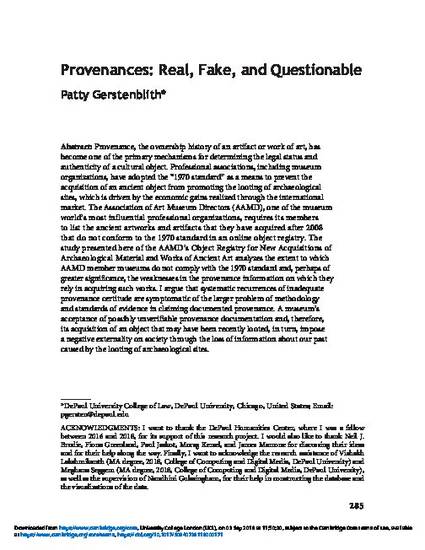
Article
Provenances: Real, Fake and Questionable
International Journal of Cultural Property
(2019)
Abstract
Provenance, the ownership history of an artifact or work of art, has become one of the primary mechanisms for determining the legal status and authenticity of a cultural object. Professional associations, including museum
organizations, have adopted the “1970 standard” as a means to prevent the acquisition of an ancient object from promoting the looting of archaeological sites, which is driven by the economic gains realized through the international
market. The Association of Art Museum Directors (AAMD), one of the museum world’s most influential professional organizations, requires its members to list the ancient artworks and artifacts that they have acquired after 2008
that do not conform to the 1970 standard in an online object registry. The study presented here of the AAMD’s Object Registry for New Acquisitions of Archaeological Material and Works of Ancient Art analyzes the extent to which
AAMD member museums do not comply with the 1970 standard and, perhaps of greater significance, the weaknesses in the provenance information on which they rely in acquiring such works. I argue that systematic recurrences of inadequate provenance certitude are symptomatic of the larger problem of methodology and standards of evidence in claiming documented provenance. A museum’s acceptance of possibly unverifiable provenance documentation and, therefore, its acquisition of an object that may have been recently looted, in turn, impose a negative externality on society through the loss of information about our past caused by the looting of archaeological sites.
Disciplines
Publication Date
Fall 2019
DOI
10.1017/S0940739119000171
Citation Information
Patty Gerstenblith. "Provenances: Real, Fake and Questionable" International Journal of Cultural Property Vol. 26 (2019) p. 285 - 304 ISSN: 9407391 Available at: http://works.bepress.com/patty-gerstenblith/89/
